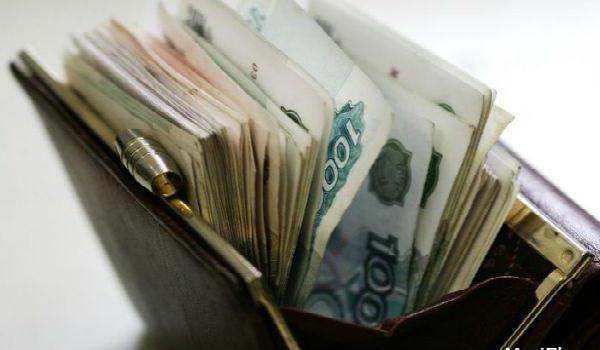One of the most important indicators that is used in calculating benefits and vacation pay is average earnings. It depends on the employee’s income, terms, work schedule and other values. Read more about how the calculation of average earnings in ordinary and non-standard situations occurs, read on.
Holiday
Each employee is entitled once a year to 28 calendar days of rest. Vacation is paid based on the average earnings, which depends on the actually accrued payments to the employee and the time worked by him. The previous calendar year is taken into account. The calculation of the average earnings for vacation pay is as follows:
From = Average daily income (SRH) x Number of days off.
Average daily income is the ratio of the accrued salary to the previous 12 months and the weighted average number of calendar days. Since 04/02/14, this figure is 29.3. What is included in the calculation of average earnings? According to paragraph 3 of Decree No. 922, wages, bonuses, allowances and other types of remuneration for labor are taken into account. The amount of previously received vacation pay, material assistance is not included in the average income. Also excluded from it payments for the period of absence of the employee, when:
a) he was kept in accordance with the law, except for breaks for feeding the baby;
b) the person received sick leave or maternity allowance;
c) the employee did not work due to reasons beyond his control, for example, downtime, strikes;
d) additional days of rest were provided for caring for the disabled person.

Average income per day = (The amount of premiums, allowances, remuneration accrued for the reporting period / 12 months) / 29.3 (constant value).
Example
An employee of the company takes a vacation from 01/19/15 to 02/01/15 for 14 days. The employee's salary for 12 months amounted to 550 thousand. In 2014, there were no passes. The calculation of average earnings will be as follows:
- Determine the daily income: 550 000/12 / 29.3 = 1564.28.
- Holiday: 1564.28 x 14 = 21 899.92.
- At the end of February, the employee received a bonus of 25,000 rubles. based on the results of work. It also needs to be included in the calculation: ((550,000 + 25,000) / 12 / 29.3) x 14 = 22,895.32.
- Determine the amount of surcharge: 22 895.32 - 21 899.92 = 995.40
Such a simple formula is rarely used. For a year, an employee is sick or takes leave at least once. Therefore, 12 months in a row are extremely rare.
Period
If one or several months are not fully worked out, then the procedure for calculating average earnings changes. The amount of actually accrued income is divided by a constant amount (29.3). Then the result is multiplied by the number of months worked.
We divide this large formula into several small ones.
SRZ = Salary / Number of days (1), where:
- (1) = Day from full months (2) + Day from incomplete months (3);
- (2) = Total months worked x 29.3;
- (3) = (29.3 / Number of days in a month) x Number of days worked This is how the average earnings for a vacation are calculated.
Consider this formula as an example.
Since May 13, an employee of the enterprise has been granted 14 days leave. In the period from 05/01/14 to 04/30/15 he was ill for 5 days. The amount of actually received salary is 268 thousand rubles. The reporting period consists of:
- full months: 322.3 days (11 x 29.3);
- incomplete months: 29.3 / 30 x 25 = 24.42 days.
The average daily income is: 268,000 / (322.3 + 24.42) = 772.96.
From the result, it is necessary to pay personal income tax and insurance premiums. If the employee’s activities are not related to the manufacture of fixed assets or intangible assets, then these expenses can be taken into account for tax purposes.

Example of calculating average earnings
The employee goes on vacation 22.05 for 28 calendar days. He worked in the organization for more than 3 years. Salary - 15,000. In May of the previous year, a person was on vacation for 28 days, and in September he fell ill for four days. We will calculate the average employee earnings:
1. Determine the salary of the employee in May:
15 000/18 x 3 (worked days) = 25 000.
2. Now we find the number of days worked:
29.3 / 31 x 3 = 2.84.
3. Salary of an employee in September (excluding sick leave):
15 000/21 x 18 (worked days) = 12857.14.
4. The number of calendar days worked in the ninth month:
29.3 / 30 x 26 = 25.39.
| Month | Salary, thousand rubles | Number of days |
| May | 2,5 | 2,84 |
| June August | 15 | 29,3 |
| September | 12, 85714 | 25,39 |
| October December | 15 | 29,3 |
| January - April | 15 | 29,3 |
| Total: | 165, 35714 | 321,23 |
Let's calculate the average earnings: 165 357.14 / 321.23 = 514.76.
Holiday: 514.76 x 28 = 14,413.28.
PIT: 14,413.28 x 0.13 = 1874.
Payout: 14,413.28 - 1874 = 12,539.28.
Early vacation
The right to paid days off for an employee appears after six months of work. If necessary, he can take leave 28 days earlier if the manager does not mind. According to Art. 137 of the Labor Code of the Russian Federation, if an employee wants to quit before the end of the period for which he received a weekend, the boss can withhold from his income arrears for unworked time.
If a person before and during the reporting period did not have an accrued salary, then the calculation of the average earnings for the vacation will be based on the amounts received for the days worked in the current month.
As an example, we will calculate for the employee who worked from May 1 to May 18, who goes on basic paid leave from May 19 for 14 days. For the convenience of calculation, we take a salary of $ 15,000.

The number of settlement days: 29.3 / 31 x 18 = 17.01.
SRZ: 15,000 / 17.01 = 881.83.
Holiday: 881.83 x 14 = 12 345.62.
Personal income tax: 12 345.62 x 0.13 = 1605.
Amount to be paid: 12,345, 62 - 1,605 = 10,740.62.
A similar procedure for calculating average earnings is used when transferring an employee between organizations. According to Art. 77 shopping mall. RF this circumstance is the reason for the termination of the previous employment contract. That is, the employee is fired and paid compensation for the remaining vacation. In a new place, the calculation of the average earnings for vacation pay will occur according to this algorithm:
- the number of days worked is determined;
- the amount of funds received by the employee is calculated;
- determined by SRH;
- vacation pay is calculated.
Part-timers
According to Art. 286 Labor Code of the Russian Federation, such workers need to provide days off in parallel with rest in the main place. The problem is that these two types of “holidays” may not coincide in duration. The manager in the second place of work does not have the right to refuse vacation for additional days. Only certain categories of employees, such as teachers, have extended holidays available. What to do? The only way out is to write a vacation application at your own expense for the missing days. Additionally, you need to provide documents from the main place of work that confirm the duration of the vacation. The amount of vacation is determined according to the standard scheme.
Dismissal
If the employee leaves the place of work, he needs to pay compensation. The calculation of the average earnings at dismissal is carried out according to the following formula:
SRZ = Actual salary paid / 12 / 29.3.
If an employee has worked for less than a year, then the calculation uses data for the period from the date of employment to the last date of the month preceding the dismissal. The same formulas and conditions apply in case of reduction of the employee.

Example No. 1
By the time of the reduction, the employee worked for the company for six months. During this time, she took 5 days of paid rest. There were no periods excluded from the experience. Upon dismissal, the employee must be provided with compensation for: 28 - 5 = 23 days. The actual salary received for 6 months is 225 thousand rubles. We will calculate the average earnings to compensate:
- 225,000 / 6 / 29.3 = 1279.86 rubles. - daily average earnings;
- 1279.86 x 23 = 29,436.78 rubles. - vacation pay.
Example No. 2
The employee wrote a letter of resignation from 05/10/2014. He worked in the organization from 05/01/2013. There were no passes in the reporting period. Salary - 20 thousand rubles. Compensation is:
- (20,000 x 12) / 12 / 29.3 = 682 rubles. - earnings per day;
- 682 x 28 = 19,096 rubles. - vacation pay.
Example No. 3
The man worked at the enterprise for more than a year. On May 24, he wrote a letter of resignation. For unused vacation, he is compensated. The basis for calculations is the period from 05/01/13 to 04/30/14.During this time, 4 days in April, the employee was on vacation. There were no other amounts excluded from the calculations. Actual salary paid - 118 thousand rubles. The base period consists of 11 full months (322.3 days) and 25.4 days in April (29.3 / 30/26).
Shipyard: 118,000 / (322.3 + 25.4) = 339 rub./day
State support
To receive benefits, a former employee must provide a certificate stating the average earnings for an employment center. Calculation of benefits is carried out as a percentage of income for the last 3 months of work. The certificate form must correspond to the form provided at the employment center. Data on the level of remuneration is stored at the enterprise for 75 years. So even if a person worked for the company 5 years ago, he can still receive such a document.
The employer must provide a certificate within three days stating the average earnings for the employment center. The calculation is carried out without taking into account the days when:
- SRH was kept for a person;
- the employee was on sick leave, on maternity leave, caring for disabled children;
- the employee did not work due to downtimes, strikes;
- the worker was on vacation.
If the entire period consists of excluded days, then the basis for the SRH calculation should be moved to the appropriate time period in the previous period.
Hoping for an average income during the period of unemployment is not worth it. The Government of the Russian Federation sets maximum payments for each fiscal year. If a person has had a paid job for more than 26 weeks (6 months) for 12 months, then two periods of payment await him. In the first six months, the size of the benefit will depend on the average monthly income:
- 75% of the established maximum in the first three months;
- 60% in the next four months;
- 45% - in the future.
The next 12 months, the worker will be paid benefits in the amount of the minimum amount. The same tariff is provided if a person has not worked for 26 weeks in the previous calendar year. The sum of the established minima and maxima increases by the district coefficient.

Recalculation
A part-time employee quit on March 10 and received a certificate of income. Former colleagues later informed him that salaries at the company had increased since March 1. An employee needs to get a recalculation. Under the law, if a change in salaries occurs after the settlement date, earnings for the base period increase. From December to February, the employee received 4 thousand rubles each. per month.
First calculus:
- Average daily income = (3 x 4000) / (21 + 17 + 20) = 12,000 / 58 = 206.90 rubles.
- Average days worked: 58/3 = 19.33.
- Earnings: 206.9 x 19.33 = 3999.38 rubles.
After recalculation, the salary for the position amounted to 5 thousand rubles. Coefficient of change: 5000/4000 = 1.25. According to new data, the shipyard will be: 3999.38 + 25% = 4999.23 rubles.
Nuances
The calculation of the average earnings for unemployment and scholarships, which are paid during the period of retraining and increase, is the same. Calculation is based on data for 3 months and the number of days worked in the reporting period.
The calculation of the average earnings for benefits is carried out according to the following formula:
SRZ = SDZ x SMD, where:
- SDZ - average earnings per day (actually accrued income / number of days worked);
- SMD - the average number of working days.
If an incomplete week is established, then this indicator is determined by dividing the salary by the number of days in the reporting period.
Calculation of average earnings can be based on data on hourly wages:
SRZ = SCZ x SMCH, where:
- SCH - average earnings per hour;
- SMP - the average monthly number of hours worked, depending on the length of the week.
The average working time for the period January - March 2015 (the number of working days 17, 20 and 20) will be:
- (136 + 159 x 2) / 3 = 151.3 (40-hour week);
- (122.4 + 143 x 2) / 3 = 136.13 (36-hour week);
- (68 + 79.5 x 2) / 3 = 75.67 (20-hour week).
The amount of working hours on the calendar is divided by 3.
Example
When working out the 40-hour week, the employee is paid a salary of 25,000 rubles. From 01.04. 13 he quits. The base for the calculation is 3 months. In January, an employee took sick leave for 3 days. The remaining months are worked out completely. In fact, the person worked: 112 + 159 x 2 = 430 hours.
The average operating time under standard conditions will be 151.33 hours.
Income: 22,058.82 + 25,000 x 2 = 72,058.82.
SRH per hour: 72,058.82 / 430 = 167.58.
SRZ: 167.58 x 151.33 = 25,359.88 rubles.

Calculation of average earnings for sick leave
The amount of disability benefits depends on the duration of work and the employee's income level:
- with an experience of 8 years, a payment of 100% of the SRH is required;
- 5-8 years - 80%;
- up to 5 years - 60%.
If the average employee's earnings exceed the statutory amounts (624,000 rubles in 2014 and 568,000 rubles in 2013.), then these maximums are taken into account.
The first step in calculating benefits is to determine the amount actually paid to the employee. The period of calculation of average earnings will be two years. The amounts for which contributions to the Social Insurance Fund were paid are taken into account. The resulting value is divided by 730 (i.e. 365 cd in the year x 2). The amount of benefits per day is calculated by multiplying daily earnings by the appropriate percentage (depending on the length of service). The first three days of sick leave are paid by the employer, the next - by the FSS. If the employee experience is less than 26 weeks, then the minimum wage is used to calculate the benefit for each month (5965 rubles for 2015).
Example No. 1
An employee of the organization was ill from February 2 to 9. For the period 2013 and 2014 there was no truancy. Salary for years of maximum amounts did not exceed. At the onset of the disease, work experience was more than 8 years. The sick leave will be paid at 100% of the average income. The salary of an employee for two years is 365 thousand rubles.
1. 365/730 = 500 - daily allowance.
2.500 x 5 = 2500 rubles. - the amount of compensation for the entire period of disability. Of them:
- 500 x 3 = 1500 - will be paid at the expense of the enterprise;
- 500 x 2 = 1000 - the FSS will list.
Example No. 2
The employee was ill from January 22 to January 25. His salary for the base period amounted to 570 thousand rubles. for 2013 and 630 thousand rubles. for 2014. Work experience - 3 years.
(568 + 624) / 730 = 1,632.88 - rub. / days - average daily earnings.
During the period of illness two calendar days fall. Since the experience of a person is less than 5 years, the benefit will be paid in the amount of 60% of the average income from the funds of the enterprise:
1632.88 x 0.6 x 2 = 1959.46 rubles.

Calculation of average earnings for travel
During travel periods only payable working days, which are provided by the time sheet and staffing. Only payments for labor are taken into account. The base period for calculations is twelve months preceding the one in which the employee was sent on a business trip. The rules for calculating the amount of average earnings are standard.
Let's look at an example.
An employee was hired by the company on February 10, 2014. Salary according to the staff list - 40 thousand rubles. By order of the director, on February 25 she was sent on a business trip lasting 4 days. Billing period (249 days) the employee did not work due to illness (8 days) and paid leave (14 days). Salary in these months amounted to 26,086.96 rubles. and 12,000 rubles. respectively.
Actual amount received for 12 months:
40,000 x 10 + 26,086.96 + 12,000 = 438,086.96 rubles.
The number of days worked: 249 - 8 - 14 = 227.
SRZ: 438,086.96 / 227 = 1,929.90 rubles.
Amount of travelers: 1,929.90 x 4 = 7,719.59 rubles.
Pregnancy and childbirth
The average income in this case is determined by dividing the amount of salary received by the number of days worked. The base period for settlements is two calendar years.
Example No. 1
The employee went on maternity leave on February 5. Her salary for the previous two years amounted to 520 thousand rubles. in 2013 and 610 thousand rubles. in 2014. These figures do not exceed the statutory maximums. Therefore, the entire amount of earnings will be taken into account when calculating benefits. Period for calculations: 365 x 2 = 730 days. Excluded amounts were absent in these years. Average daily earnings = (610 + 520) / 730 = 1,547.95 rubles. - The basis for calculating the amount of benefits.
Example No. 2
An employee on 06/10/2015 went on maternity leave. She was employed in the organization from 08/01/2013. Her salary for the previous two years amounted to 90 thousand rubles. in 2013 and 510 thousand rubles. in 2014. By the time the vacation began, the total insurance experience exceeded 6 months. The allowance will be calculated based on the salary received.
Actual employee earnings: 90 + 510 = 600 thousand rubles.
For two years, the employee had 35 days to be excluded. Then the base period is: 730 - 35 = 695 days.
Average daily earnings: 600,000 / 695 = 863.31 rubles. This figure will be taken into account when calculating benefits.
Example No. 3
An employee of the company in 2015 goes on parental leave. In the billing period, she was sick for 45 days. The allowance will be calculated based on 685 days.
Average earnings: 630 (2013) + 620 (2014) = 1,250,000 rubles.
This figure exceeds the legislative limit - 1,192,000 rubles:
- 630,000> 568,000 (2013);
- 620,000 <624,000 (2014).
Average daily earnings: (568 + 620) / 685 = 1,734.30 rubles.
The maximum value of the SRH, which is established by law: 1192/730 = 1,632.87 rubles.
Since the calculated value is greater than the maximum, when calculating the amount of the sick-list, the amount of 1632.87 rubles will be used.

Limitations
If in the base period the employee had no income or its value did not exceed the legislatively established minimum, then the minimum wage is used to calculate the amount of the allowance, sick leave, and vacation pay. The average daily wage is calculated as follows:
Minimum wage x 24 months / 730 days.
An employee of the enterprise was taken to the first place of work on January 15. From April 25 to April 29, she was ill. Since there was no previous insurance experience, the amount of benefits will be calculated on the basis of 60% of the SRH. Over the past 24 calendar months (from 01/01/13 to 12/31/14), the actual level of salary was 0 rubles. The allowance will be calculated based on the minimum wage: 5965 x 24/730 days. = 196.11 rubles.
Seasonal work
The algorithm for calculating average earnings for employees who take temporary jobs is slightly different from the general one.
SRZ = Actual salary / Number of days worked during a 6-day week.
Example No. 1
The company entered into a temporary work contract with an employee from September 1 to October 2. In October, he was granted two days' paid leave. For a fully completed September employee received 20,000 rubles. With a 6-day week, the number of working days is 26. Shipyard: 20,000 / 26 = 769.23 rubles.
Example No. 2
The company entered into a temporary work contract with the employee from 01.03 to 03.04. For a fully worked March, the employee received 12,000 rubles, and for 3 days of April - 1,636 rubles. With a 6-day working week, the number of working days is 28. SRH: (12,000 + 1636) / 28 = 487 rubles.
Example No. 3
The company entered into a seasonal work contract with an employee from August 3 to October 1. For fully worked months, he will receive 25,000 rubles. In October, an employee took leave for 5 days, followed by dismissal. From August 10 to August 14, he was ill. This period is excluded from SRH calculation. For the spent 47 days, 45,183.98 rubles were accrued. SRZ: 45,183.98 / 47 days = 961.36 rubles.
Example No. 4
The company entered into an agreement with the employee for seasonal work from February 11 to April 8. For fully worked months, he will receive 12,000 rubles. In February, he was sick for 8 days. This period is excluded from the calculation of average earnings. For all the time, a salary of 20,073 rubles was accrued. Shipyard: 20 073/41 day = 490 rub.
Absenteeism
A man was hired by the organization on the 5-day week of 02/01/12, and on April 26 of that year decided to quit. The base for calculations is 3 months. The first two employees worked completely. In March, he was sick for 6 days, took 3 days at his own expense and missed the same amount for no good reason. According to the regulations, sick leave and leave at their own expense are excluded, and absenteeism is not included in the list. It turns out that the employee worked: 17 + 20 + (20 - 6 - 4) = 47 days. Under standard conditions, the average number of days worked is 19.
Total salary: 15,000 x 2 + 5,250 = 35,250 rubles. Shipyard: 35,250 / 47 x 19 = 13,037.23 rubles.






